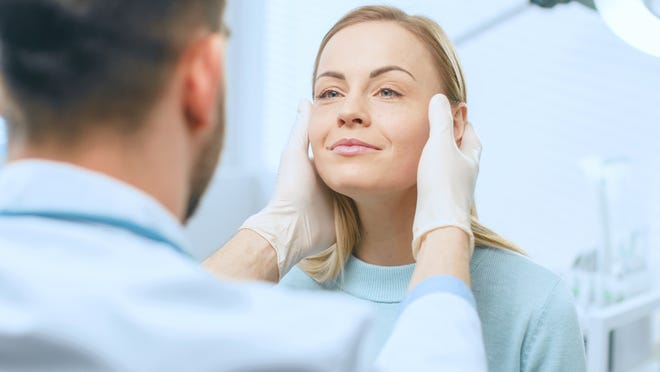Everyone probably thinks plastic surgeons must cut skins and faces when it comes to facelifts, but this is not true. There is an actual technique called nonsurgical facelifts, and plastic surgeons have been doing it for years. Also, since they are getting safer and more effective, everyone (both men and women) is opting for this option for aesthetic purposes. In 2017, more than 15 million minimally invasive procedures were conducted in the United States of America.
But what is a nonsurgical facelift?
Defining Nonsurgical Facelifts
A nonsurgical facelift is an amalgamation of nonsurgical and minimally invasive procedures designed to refresh and rejuvenate a person’s appearance (primarily facial). Compared with surgical options, they do not entail extensive incisions, general anesthesia, or long-term hospitalization. These treatment types allow patients for facelifts to spend short times in healthcare facilities and experience minimal post-op discomfort and nominal rest and recovery times. Basically, it’s a surgical facelift without the surgery and with lesser post-op stress and effects.
Advantages and Disadvantages of Nonsurgical Facelifts
Below are the advantages and disadvantages of a facelift (nonsurgical):
Pros
- It is quick.
- It gives little discomfort.
- It is cost-effective.
- It can be used to get various looks temporarily.
Cons
- It offers less dramatic results compared to surgical facelifts.
- It needs to be done repeatedly.
- It’s only cheaper in the short term.
What Does a Nonsurgical Facelift Comprise?
While there are basic processes for nonsurgical facelifts, each operation has unique applications, choices, and needs. Noninvasive techniques include treating fine lines, lax skin, sunken cheeks, acne, loss of facial volume, large pores, deep creases, and thinning lips. Below are the standard components of a nonsurgical facelift:
Fat injectables
This is a semi-invasive procedure requiring liposuction to extract fatty tissues from other body parts. These fat cells are cleaned and made ready, then reinjected into the face to improve facial volume. The new fat cells will join the existing ones and mix. They will provide fillings to much-needed places and can last for years.
Needleless treatments
Nonsurgical facelifts are usually as effective as possible in creating lovely complexions without the use of needles. One technique usually utilized in place of needles is the use of modern-day chemical peels. These are good at shrinking pores and enhancing general skin quality. Dermabrasion (and microdermabrasion) reappear and exfoliate the skin, eliminating dry and hurt tissue.
Wrinkles, fine lines, and hyperpigmentation are reduced as fresher skin replaces old skin. Ultrasound and laser treatments utilize concentrated energy to treat the foundational layers of the skin. As time goes on after the surgery, the tissue becomes firmer and tighter.
Botox
Botox is a significant substance in the facelift (nonsurgical) world. It provides wrinkle reduction better than any other substance used in this category. It is used to smooth frown lines, forehead creases, and crow’s feet; it is suitable for just about any type of wrinkle. Botox smooths frown lines related to repetitive expressions and temporarily relaxes the targeted muscle. However, Botox does not offer instantaneous relief from wrinkles; it can take one to two weeks to get results. Its benefits, however, stay for three months.
Dermal fillers
Dermal fillers are a very vital part of nonsurgical facelifts. These injectables quickly bring back volume to the cheeks, lips, below the eyes, and temples. Sunken areas all over the face are filled up, eliminating shadows and injecting vibrancy and youthful appearances. Fillers also induce definition and smooth tissues to give a wrinkle-free look. These injectables are made from numerous products, one of which is hyaluronic acid. The properties of dermal fillers can last between six to twelve months.
Other Things to Note
It is important to note that noninvasive treatments must be repeated once a few months to ensure consistent results. The more consistent one is about nonsurgical treatments over time, the less they might need.
For instance, when the muscles and the skin are relaxed in Botox sessions, facial expression lines will not depreciate, which implies that less Botox will induce like results later on.
Also, the hyaluronic acid in dermal fillers enhances the body’s collagen production, creating a tough layer underneath the skin. Wrinkles become less deep, so fewer filler syringes will be used as time goes on.
Conclusion
Getting the best nonsurgical treatments is important, as they could prove vital and helpful in the long run. Hence getting an experienced healthcare provider in this aspect is essential. They could work magic on your face and make people believe you don’t age at all.
